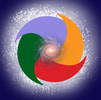“We have the body we have because it is precisely the vehicle in which we can best do what we came to do.”
~ Christiane Northrup
~ Christiane Northrup
Movement Therapy
Movement Therapy is a holistic approach to healing that addresses the emotional, social, physical, spiritual, and cognitive integration of an individual.
Movement Therapy brings body movement into therapeutic work as an innovative addition and a versatile alternative to verbal processing. By inviting therapeutic movement, I help my clients explore ongoing themes in their lives through directing attention to sensation and verbal understanding; thus, on their time, arriving at the integration of body, mind, and soul.
Movement Therapy brings body movement into therapeutic work as an innovative addition and a versatile alternative to verbal processing. By inviting therapeutic movement, I help my clients explore ongoing themes in their lives through directing attention to sensation and verbal understanding; thus, on their time, arriving at the integration of body, mind, and soul.
Moving Through Life
As human beings, we were designed to be fully present and embodied as we live our lives. As we move, whether in dance, sports, play, work or simply in being with others, there is usually a desire to want to connect. Unfortunately, connecting may be difficult when we hold so much emotional baggage and stress in our bodies.
The ability to create relationships is a skill which begins at home, within our own bodies. Movement therapy can play an essential role in helping you re-claim your authentic connection to yourself and others by:
You don’t have to be a dancer to benefit from movement therapy, and you don’t have to dance to do movement therapy. I will, however, encourage you to listen to what moves in you and to what may want to happen as a result.
The ability to create relationships is a skill which begins at home, within our own bodies. Movement therapy can play an essential role in helping you re-claim your authentic connection to yourself and others by:
- Learning how to develop and trust your ability to be more present and compassionate with yourself and others.
- Being able to respond from a more authentic place.
- Learning how to translate the nonverbal movements into insights.
You don’t have to be a dancer to benefit from movement therapy, and you don’t have to dance to do movement therapy. I will, however, encourage you to listen to what moves in you and to what may want to happen as a result.
Dance/Movement Training and Experience
While studying dance/movement therapy, I was exposed to the Gestalt-based Moving Cycle, Authentic Movement, Contact Improvisation, 5Rhythms, The Kestenberg Movement Profile, Laban’s Effort-Shape Theory, Body-Mind Centering, Bartenieff’s Fundamentals and Space Harmony, La Barre’s Studies of Nonverbal Behavior, and sensorimotor tracking with a mindfulness practice.
I have learned to recognize and address how feelings and life experiences live inside the body. Moreover, unprocessed difficult emotions, when chronically repressed, end up getting trapped in our human anatomy, often leading to energy loss, emotional and physical imbalance, and eventually dis-ease.
Gratefully, therapeutic movement provides a way for the body to communicate conscious and unconscious feelings that may shed some light into how to liberate and shift our lives in a positive way. Thus, the body can be a significant key to unlocking profound levels of healing.
I have learned to recognize and address how feelings and life experiences live inside the body. Moreover, unprocessed difficult emotions, when chronically repressed, end up getting trapped in our human anatomy, often leading to energy loss, emotional and physical imbalance, and eventually dis-ease.
Gratefully, therapeutic movement provides a way for the body to communicate conscious and unconscious feelings that may shed some light into how to liberate and shift our lives in a positive way. Thus, the body can be a significant key to unlocking profound levels of healing.
What To Expect In a Movement Therapy Session
Movement therapy sessions are often focused on spontaneous movement behavior as it comes forward through the creative process; that is, the healing potential of the creative experience, and the therapeutic properties of conscious movement.
A movement therapy session may include improving self-esteem and body image; developing effective communication skills; learning to regulate emotions; exploring how to set healthy boundaries that work for you, and expanding movement vocabulary in order to gain insight and create new ways of engaging in problem-solving.
Some interventions may include:
I sincerely invite you to consider Movement Therapy as it may help you develop a moment-to-moment embodiment of your experience, including feeling sensations, awareness of emotions, occupying your body, and tracking your movements and thoughts. A word of caution is appropriate here: Therapeutic Movement may change your life for the better and it could be fun! - Lina Návar
A movement therapy session may include improving self-esteem and body image; developing effective communication skills; learning to regulate emotions; exploring how to set healthy boundaries that work for you, and expanding movement vocabulary in order to gain insight and create new ways of engaging in problem-solving.
Some interventions may include:
- Mirroring. Matching and echoing my client's movements to show empathy and validate what they are feeling. Also, very importantly, mirroring informs my client that I see her/him/them!
- Using a “movement metaphor” or prop to help my client physically and expressively demonstrate a therapeutic challenge or achievement. For example: I may give my client a high five to celebrate a personal accomplishment.
I sincerely invite you to consider Movement Therapy as it may help you develop a moment-to-moment embodiment of your experience, including feeling sensations, awareness of emotions, occupying your body, and tracking your movements and thoughts. A word of caution is appropriate here: Therapeutic Movement may change your life for the better and it could be fun! - Lina Návar
"The body always leads us home . . . if we can simply learn to trust sensation and stay with it long enough for it to reveal appropriate action, movement, insight, or feeling." ~ Pat Ogden


